A coach is there to coach right? This means standing at the front, directing actions, movements, skills and learning. Everyone has had those great moments where a coach says one thing and you instantly get better! Whilst this gets great initial changes to performance, are you actually learning? The new school approach promotes self learning and discovery to be best.
So what’s the point of even having a coach. When internal feedback isn’t available i.e you can’t see what you did or if it worked, you’re going to need a coach. You may also be able to see the result of an action, but have no idea why it happened!
How a coach provides feedback can have a massive effect on whether or not you’re actually learning!
Knowledge of Results
Viewed as the most important type of external feedback. The knowledge of whether or not a skill or task was completed successfully.
Yes there are many ways a coach can delve into how, why and when certain things happened at certain times. However, the most important aspect to focus on is success vs failure.
 Frequency of Feedback
Frequency of Feedback
Initially feedback that is given after every rep will increases performance. Unfortunately, this does not last as it actually prevents a player from learning.
Giving feedback all of the time means players become dependent on you. You are there to make sure they can perform WITHOUT you, you can be on the pitch come game day!
Methods to Appropriately Reduce Feedback
Fading feedback is exactly what it sounds like! Gradually reduce feedback as performance begins to improve. If possible you want to start with the lowest amount necessary.
Bandwidth means you set parameters that determine success and failure. Where an athlete fails to perform within the acceptable range, you provide feedback.
Delaying or providing a summary of results after a number of trails, gives an athlete a chance to correct any faults before you step in. Allow learning to occur.
Situations that demand more feedback may include safety issues and novice learners. Everybody is different so learn to gauge how you can get the most out of certain athletes.
 3 Ways to Promote Self Learning
3 Ways to Promote Self Learning
Don’t just reduce your use of feedback. Allow athletes to discover skills, promote self learning.
Ask questions – can you guide them to the correct answer?
Change drills to promote skills – Make it impossible to practice anything other than a specific skill.
Use analogies to make them think – Can you make a skill relatable to something they have done before? Be creative!
 Practical Application
Practical Application
Limit total feedback
Use positive, visual feedback
Allow learning to occur
Ask questions
Promote self-learning
It’s not hard to see different examples of coaching. Simply take a walk through Richmond park and you’re likely to see any number of different sessions going on. Next time you hear a coach barking orders, ask yourself this one question “Are they actually learning?”
As a Personal Trainer in Richmond, London, I want all my clients to be capable of performing any skill or exercise without me there!
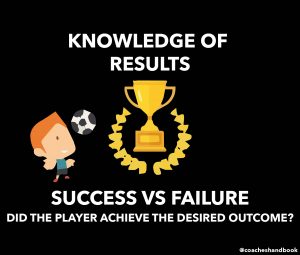
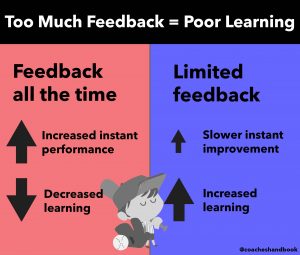 Frequency of Feedback
Frequency of Feedback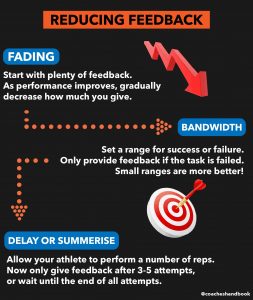
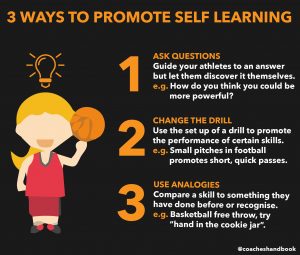 3 Ways to Promote Self Learning
3 Ways to Promote Self Learning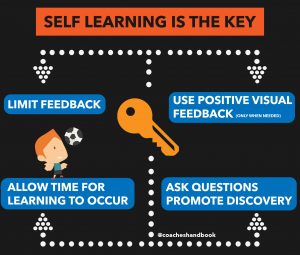 Practical Application
Practical Application